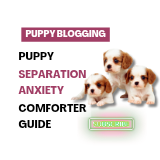Safe Haven: Essential Safety Precautions and Proper Placement for Your Dog's Crate
- May 7, 2023
- 3 min read
Updated: Feb 20
Crate training offers numerous benefits for both you and your dog, providing a secure and comfortable space. However, ensuring the safety and well-being of your furry friend involves more than just introducing them to a crate. In this post, we'll explore crucial safety precautions to consider when using a crate and provide guidelines on the proper positioning to create a secure environment for your canine companion.

Safety Precautions When Using a Crate:
Appropriate Size: Choose a crate that is appropriately sized for your dog. It should be large enough for them to stand, turn around, and lie down comfortably, but not so spacious that it eliminates the cosy and secure feeling.
Safe Materials: Opt for a crate made of safe and sturdy materials. Ensure there are no sharp edges, protruding wires, or potential hazards that could harm your dog.
Secure Door Latch: Check that the crate has a secure door latch to prevent accidental escapes. A well-designed latch ensures that your dog remains safely contained.
Remove Collars and Tags: When placing your dog in the crate, remove collars and tags to prevent the risk of entanglement. This reduces the possibility of your dog getting caught on the crate during movement.
Supervise Early Use: During the initial stages of crate training, supervise your dog to ensure they adapt positively. This allows you to address any concerns promptly and observe their comfort level.
Avoid Prolonged Confinement: While crates can be valuable tools, avoid prolonged confinement. Dogs require social interaction, exercise, and mental stimulation. Use the crate as a safe space for rest and relaxation rather than extended isolation.
Gradual Alone Time: Gradually increase the duration your dog spends in the crate alone. This prevents anxiety and ensures a positive association with crate time.
Monitor for Distress Signs: Be attentive to signs of distress, such as excessive barking, whining, or attempts to escape. If your dog exhibits stress signals, revisit crate training to address any issues causing discomfort.
Proper Positioning of the Crate:
In a Quiet Area: Place the crate in a quiet and low-traffic area of your home. This provides a calm environment for your dog, reducing potential stress.
Away from Extreme Temperatures: Avoid placing the crate in areas exposed to extreme temperatures. Keep it away from direct sunlight, heaters, or drafts to ensure your dog remains comfortable.
Near Family Activity: While the crate should be in a quiet area, position it near family activities. This allows your dog to feel connected and prevents feelings of isolation.
Not Close to Negative Stimuli: Keep the crate away from loud appliances, negative stimuli, or areas with high foot traffic. The goal is to create a serene and positive environment within the crate.
Integrate with Daily Routine: Incorporate the crate into your dog's daily routine. Use it during meal times, as part of training sessions, or for short periods of rest. This helps normalise the crate as a positive space.
Implementing safety precautions and thoughtful positioning ensures that your dog's crate remains a secure and welcoming space. By prioritising your dog's well-being and comfort, you create an environment that fosters positive associations with the crate, making it a valuable tool in your canine companion's life. Remember, a well-designed and well-placed crate contributes not only to safety but also to the overall happiness and contentment of your beloved furry friend.










Comments